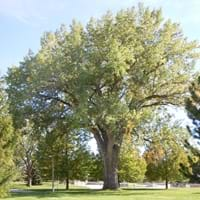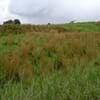Life Span
Perennial
Perennial
Origin
United States, Northeastern United States, Mid-Atlantic United States, Southeastern United States, North-Central United States, Central United States, South-Central United States, Texas
Northeastern United States, Mid-Atlantic United States, Southeastern United States, Central United States, Canada, Mexico
Types
Virginia water horehound
Plains Cottonwood, Rio Grande cottonwood
Number of Varieties
Not Available
Habitat
Along Railroads, Barren waste areas, Hill prairies, Mined land, Pastures, Roadsides, Rocky glades, Sandy areas, Upland, Upland clay prairies, Upland sand prairies, Upland sandy savannas, Upland savannas, Upland soils
bottomlands, Floodplain, Hardwood forests, Riverbanks
USDA Hardiness Zone
5-8
3-9
Sunset Zone
Not Available
1a, 1b, 2a, 2b, 3a, 3b, 4, 5, 6, 7, 8, 9, 10, 11, 14, 15, 16, 17, 18, 19, 20, 21
Habit
Clump-Forming
Upright/Erect
Flower Color
Not Available
Red, Green
Flower Color Modifier
Bicolor
Bicolor
Fruit Color
Not Available
White
Leaf Color in Spring
Green
Green, Gray
Leaf Color in Summer
Light Green
Green
Leaf Color in Fall
Orange, Tan, Brown
Yellow
Leaf Color in Winter
Tan, Sandy Brown
Not Available
Leaf Shape
Grass like
Toothed curved and flat petiole
Plant Season
Summer, Fall, Winter
Summer, Fall
Sunlight
Full Sun, Partial Sun, Partial shade
Full Sun
Growth Rate
Fast
Very Fast
Type of Soil
Loam, Sand
Loam, Sand
The pH of Soil
Acidic, Neutral, Alkaline
Acidic, Neutral
Soil Drainage
Well drained
Average
Bloom Time
Early Fall, Fall
Early Spring
Tolerances
Pollution, Drought
Drought, Soil Compaction, Wet Site
Where to Plant?
Ground
Ground
How to Plant?
Divison, Root Division, Seedlings
Seedlings, Stem Planting
Plant Maintenance
Medium
Low
Watering Requirements
Average Water Needs, Medium
Keep ground moist, Requires regular watering, Requires watering in the growing season, Water daily during growing season, Water Deeply, Water more in summer
In Summer
Lots of watering
Ample Water
In Spring
Moderate
Ample Water
In Winter
Average Water
Average Water
Soil pH
Acidic, Neutral, Alkaline
Acidic, Neutral
Soil Type
Loam, Sand
Loam, Sand
Soil Drainage Capacity
Well drained
Average
Sun Exposure
Full Sun, Partial Sun, Partial shade
Full Sun
Pruning
Remove damaged leaves, Remove dead branches, Remove dead leaves
Remove dead branches, Remove hanging branches
Fertilizers
All-Purpose Liquid Fertilizer
fertilize in growing season, Nitrogen
Pests and Diseases
Red blotch
Aphids, Borers, Caterpillars, Insects
Plant Tolerance
Drought
Drought, Soil Compaction, Wet Site
Flowers
Insignificant
None
Flower Petal Number
Single
Not Available
Foliage Texture
Fine
Medium
Foliage Sheen
Matte
Glossy
Invasive
Sometimes
Sometimes
Attracts
Birds, Butterflies
Not Available
Allergy
Pollen
Hay fever, Headache, Runny nose, sneezing
Aesthetic Uses
Not Used For Aesthetic Purpose
Landscape Designing
Beauty Benefits
Not Available
No Beauty Benefits
Edible Uses
Insignificant
Yes
Environmental Uses
Air purification, Food for birds, Wildlife
Air purification, Forms dense stands, Prevent Soil Erosion, Shadow Tree, Shelter for wildlife, Wildlife, Windbreak
Medicinal Uses
Back pain, Diarrhea, Frostbite, Itching, Piles, Sore Eyes, Sore throat
Anodyne, Anthelmintic, anti-inflammatory, Febrifuge
Part of Plant Used
Root, Seeds, Stem
Inner Bark, Leaves, Seeds
Other Uses
Cattle Fodder, Used As Food, Used as Ornamental plant
Biomass for fuel, Used as firewood, Used As Food
Used As Indoor Plant
No
No
Used As Outdoor Plant
Yes
Yes
Garden Design
Dried Flower/Everlasting, Wildflower
Screening / Wind Break, Shade Trees
Botanical Name
ANDROPOGON virginicus
POPULUS deltoides
Common Name
Broomsedge, Broomsedge Bluestem
Eastern Cottonwood
In Hindi
Broomsedge grass
Eastern Cottonwood
In German
broomsedge Gras
Eastern Cottonwood
In French
broomsedge herbe
Cottonwood Orient
In Spanish
hierba Broomsedge
Cottonwood del Este
In Greek
Broomsedge γρασίδι
Ανατολική Cottonwood
In Portuguese
Broomsedge grama
Cottonwood Oriental
In Polish
Broomsedge trawy
Eastern Cottonwood
In Latin
Broomsedge herba
Orientalium Poplar
Phylum
Magnoliophyta
Anthophyta
Class
Liliopsida
Dicotyledonae
Order
Cyperales
Salicales
Family
Poaceae
Salicaceae
Clade
Angiosperms, Commelinids, Monocots
Angiosperms, Eudicots, Rosids
Tribe
Andropogoneae
Not Available
Subfamily
Panicoideae
Salicoideae
Number of Species
Not Available
Importance of Broomsedge and Eastern Cottonwood
Want to have the most appropriate plant for your garden? You might want to know the importance of Broomsedge and Eastern Cottonwood. Basically, these two plants vary in many aspects. Compare Broomsedge and Eastern Cottonwood as they differ in many characteristics such as their life, care, benefits, facts, etc. Every gardener must at least have the slightest clue about the plants he wants to plant in his garden. Compare their benefits, which differ in many ways like facts and uses. The medicinal use of Broomsedge is Back pain, Diarrhea, Frostbite, Itching, Piles, Sore Eyes and Sore throat whereas of Eastern Cottonwood is Anodyne, Anthelmintic, anti-inflammatory and Febrifuge. Broomsedge has beauty benefits as follows: Not Available while Eastern Cottonwood has beauty benefits as follows: Not Available.
Compare Facts of Broomsedge vs Eastern Cottonwood
How to choose the best garden plant for your garden depending upon its facts? Here garden plant comparison will help you to solve this query. Compare the facts of Broomsedge vs Eastern Cottonwood and know which one to choose. As garden plants have benefits and other uses, allergy is also a major drawback of plants for some people. Allergic reactions of Broomsedge are Pollen whereas of Eastern Cottonwood have Hay fever, Headache, Runny nose and sneezing respectively. Having a fruit bearing plant in your garden can be a plus point of your garden. Broomsedge has no showy fruits and Eastern Cottonwood has no showy fruits. Also Broomsedge is not flowering and Eastern Cottonwood is not flowering . You can compare Broomsedge and Eastern Cottonwood facts and facts of other plants too.





